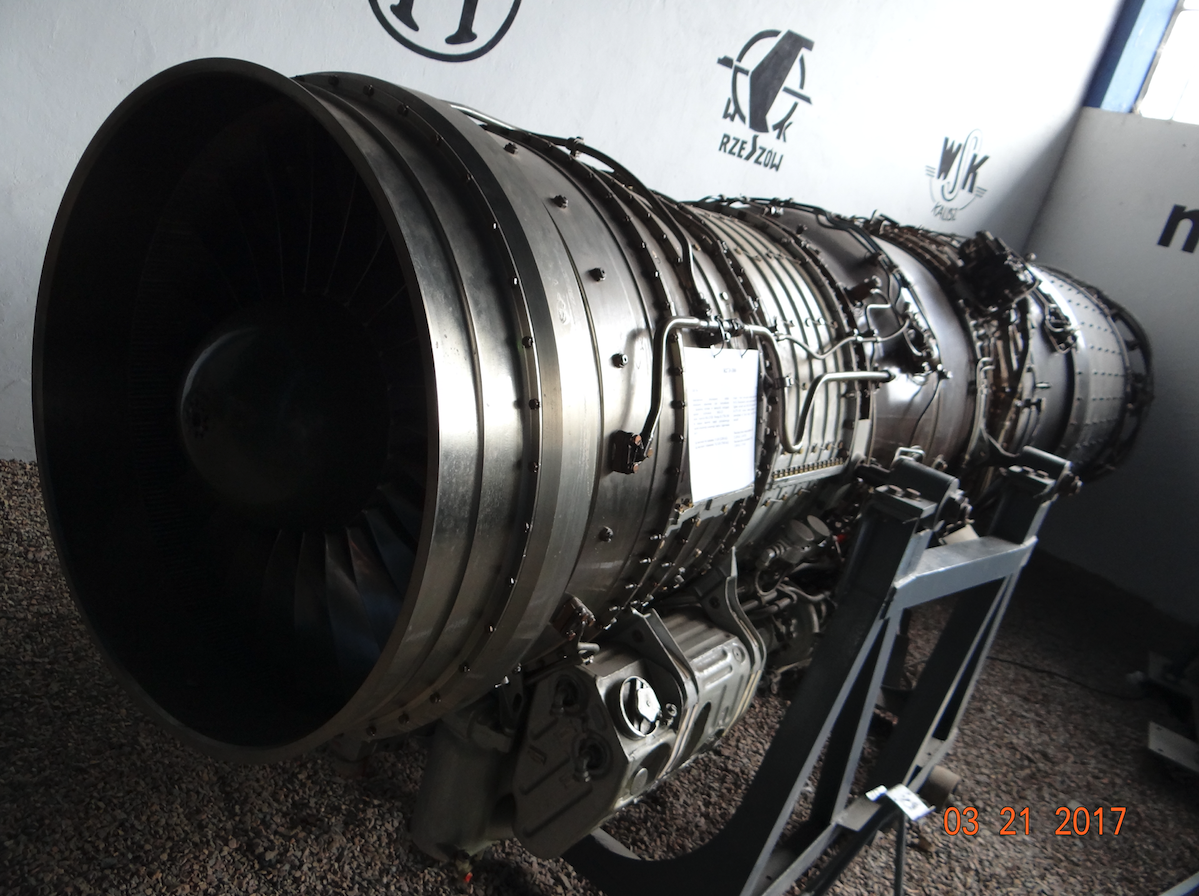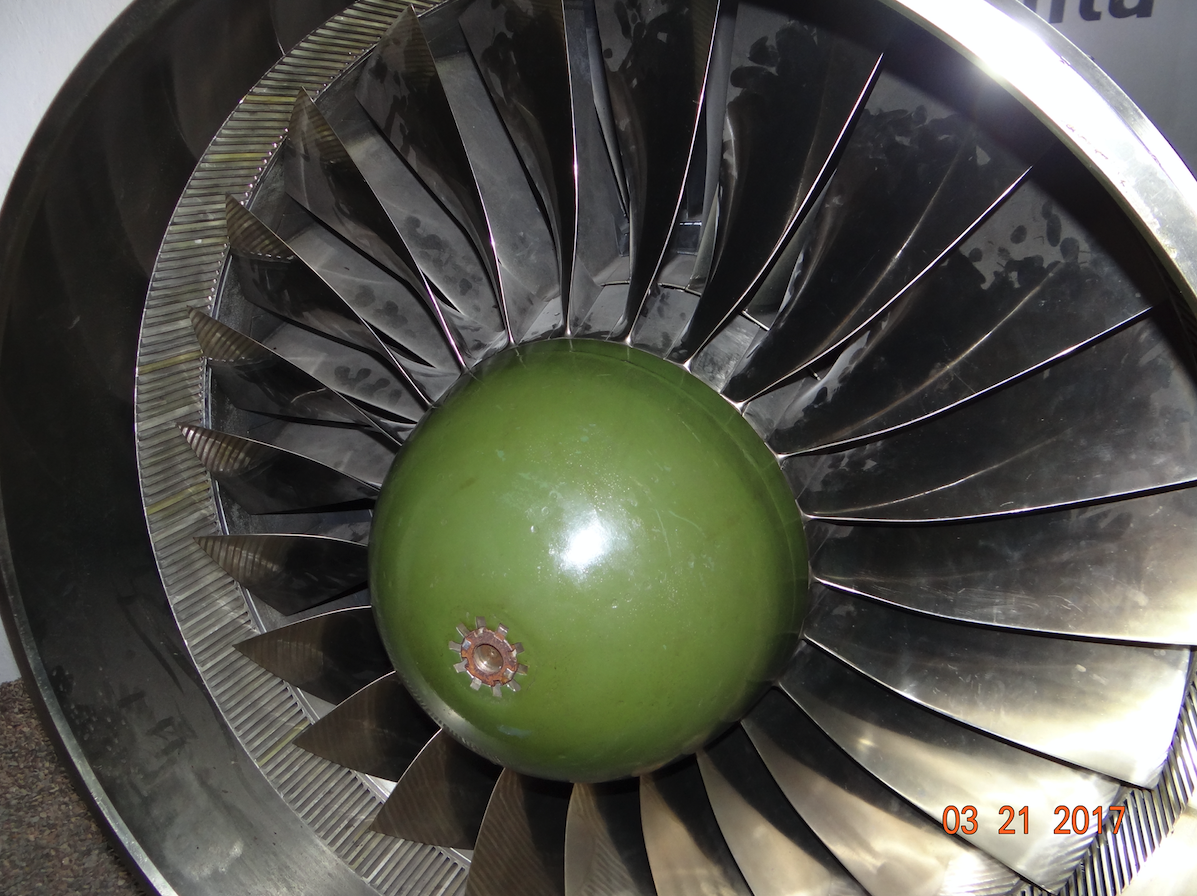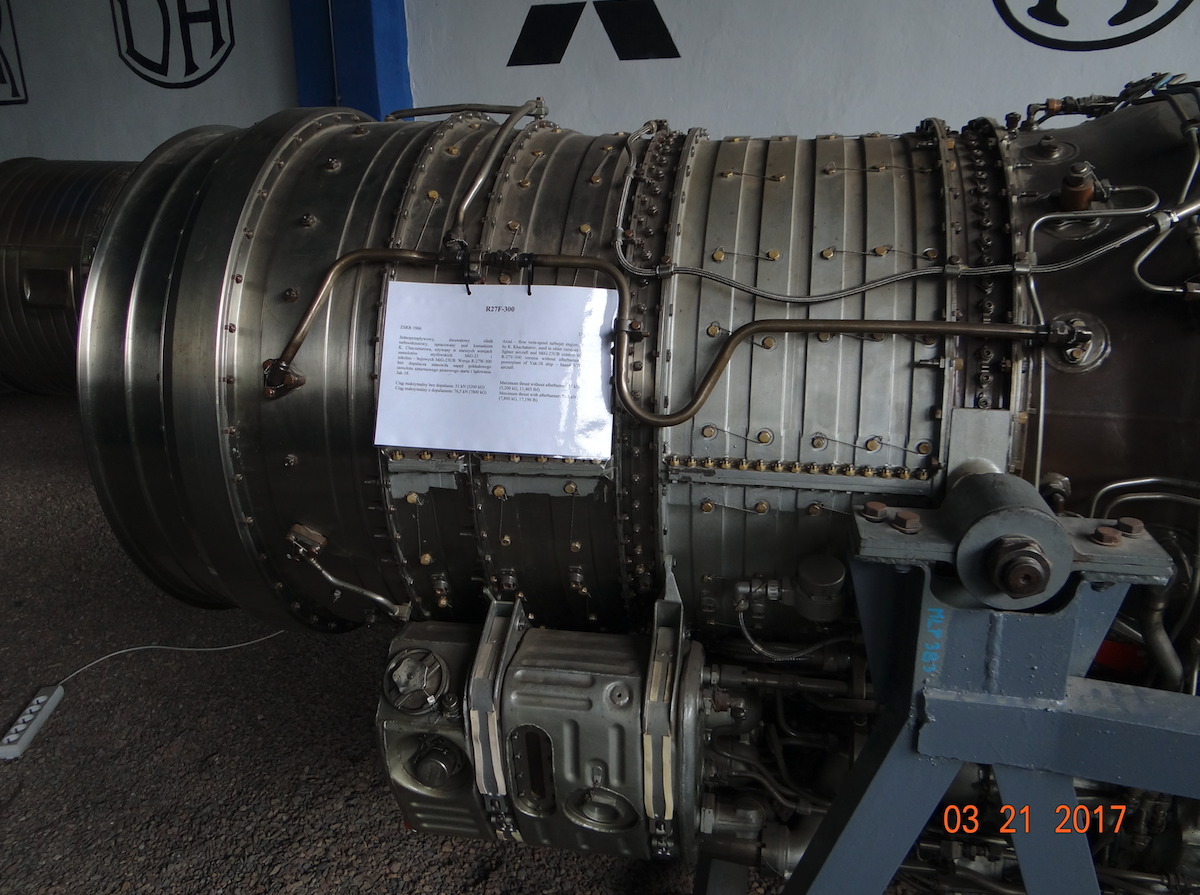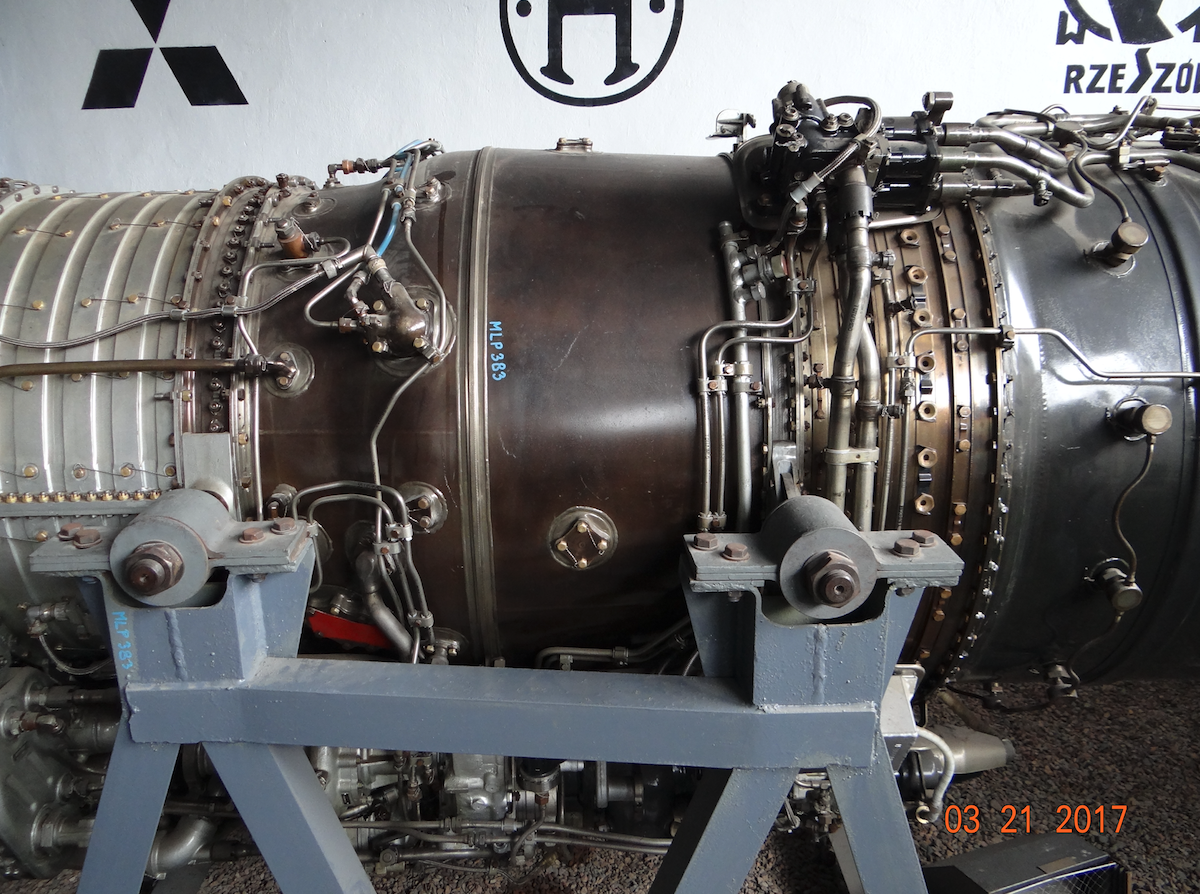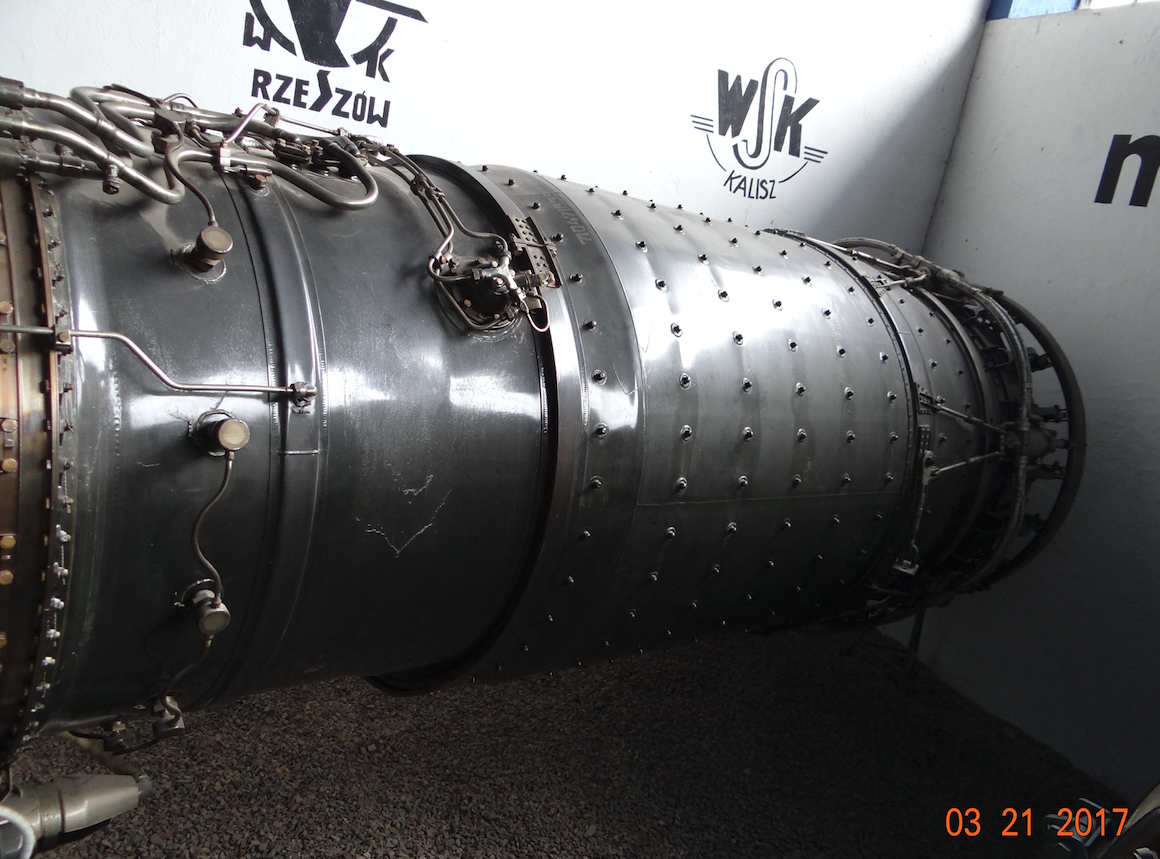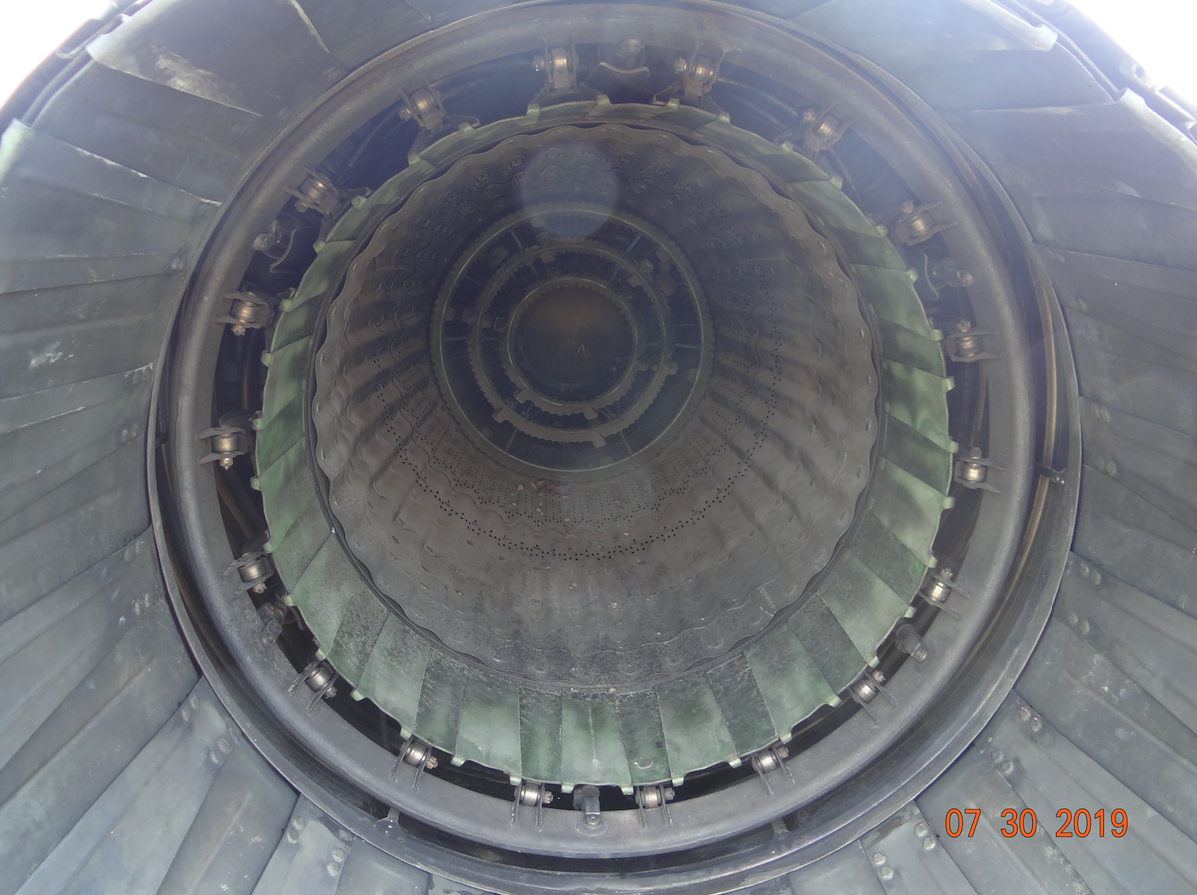Kraków 2020-11-02
Tumański R-29-300. 1972 rok.
Z początkiem 60-lat w CCCP zdecydowano o budowie silników dwuprzepływowych przeznaczonych dla samolotów bojowych. W zespole Tumańskiego przystąpiono do pracy nad programem Izdielienie 55.
Silnik R-25.
Silnik R-25 jest kontynuacją silników: R-11, R-13. Silnik R-25 był użyty w samolocie MiG-21 bis. Silnik R-25 ma dwa stopnie dopalania. Silnik R-25-300 ma ciąg bez dopalania 1 x 4 020 kG., z pierwszym stopniem dopalania ma ciąg 6 960 kG., z drugim stopniem dopalania ma ciąg 9 708 kG. Silnik jest jedno-przepływowy, dwu-wałowy, 3 stopnie sprężarki jednego wału, 5 stopni drugiego, 1 turbina jednego wału i 1 turbina drugiego wału, podwójny dopalacz. Długość silnika 4,61 m, średnica 0,967 m, masa 1 210 kg.
Silnik R-27.
Silnik R-27 powstał w 1966 roku, pod kierunkiem K. Chaczaturowa. Silnik jest jedno-przepływowy, dwu-wałowy, wyposażony w dopalacz. Silnik użyto w samolotach MiG-23 DPD i pierwszych wersjach samoltów MiG-23, a także w samolotach MiG-23 UB. Wersja silnika R-27 bez dopalania została użyta w samolocie pionowego startu Jak-38. W tym samolocie dysza wylotowa silnika jest podwójna i regulowana. Odchyla strumieć gazów wylotowych z opłożenia poziomego do położenia pionowego. Jednak konieczny był silnik w większym ciagu.
Dane silnika R-27F-300:
Silnik Tumański R-27 jest silnikiem przeznaczonym do lotów naddźwiękowych, do prędkości Ma 2,5. Silnik ma ciąg maksymalny bez dopalania 51,00 kN (5 200 kG), a z dopalaniem maksymalnie 76,50 kN (7 800 kG). Po włączeniu dopalacza przyrost ciągu wynosi 50 %.
Silnik R-29.
Później powstał silnik R-29-300, którego testy w powietrzu przeprowadzono w 1972 roku. Silnik R-29 w porównaniu z silnikiem R-27 jest silnikiem dwuprzepływowym i ma znacznie większy ciąg, zarówno bez dopalania jak i z dopalaniem. Silnik Tumański R-29-300 dedykowano samolotom bojowym MiG-23, MiG-27, Su-17, Su-22, Su-24, chociaż nabywcom zagranicznym zamiennie oferowano także jedno-przepływowe silniki AL-21. Dostosowaniem silnika do różnych typów samolotów zajmował się inżynier K. Chaczaturow (К. Р. Хачатуров).
Silnik Tumański R-29-300 powstał w kilku podstawowych odmianach. Silniki ma długość 4,99 m, średnicę 0,968 m, masę 1 777 kg. Silnik ma ciąg 8 250 kG bez dopalania i 11 500 kG z dopalaniem. Silnik posiada 5-stopniową sprężarkę niskiego ciśnienia (pierwszy i drugi stopień wykonano z tytanu, pozostałe ze stali żarowytrzymałej), 6-stopniową sprężarkę wysokiego ciśnienia, pierścieniową komorę spalania z 18 wtryskiwaczami, 1-stopniową turbinę wysokiego ciśnienia, 1-stopniową turbinę niskiego ciśnienia i dopalacz. Kompresja sprężarki wynosi 12,2:1 (13:1). Przepływ powietrza przez silnik wynosi 105 kg/s. Zużycie paliwa 0,78 kg/kGh bez dopalania i 1,80 kg/kGh z dopalaniem, inaczej 0,9 – 1,2 kg/daN/h bez dopalania, a z dopalaniem 1,5 – 2,0 kg/daN/h. Temperatura gazów przed turbiną wynosi 1 150 stopni C. Silnik posiada system automatycznego utrzymywania stałej temperatury gazów za turbiną w danym reżimie. Dopalacz o długości około 1,5 m, z trzema rzędami wtryskiwaczy. Silnik kończy regulowana dysza zbudowana z 18 klapek poruszanych hydraulicznie. Uruchamianie silnika na ziemi turbo-rozrusznikiem TS-21 (rosyjskie TC-21). Paliwo nafta T-1, TS-1, RT. Olej IPM-10 lub syntetyczny WNII-50. Resurs silnika wynosi 900 – 1 500 godzin w zależności od serii produkcyjnej. Okres międzyremontowy 350 – 450 godzin.
Standardowo silnik uruchamiany jest rozrusznikiem TS-21 (TC-21). W locie, rozruch silnika odbywa się z autorotacji. Na dużych wysokościach, gdzie powietrze jest rozrzedzone, tlen z butli wspomaga rozruch. Cały układ olejenia zamontowany jest na silniku. Silnik jest przystosowany do lotów z dużymi prędkościami na małych wysokościach.
Silniki Tumański R-29-300 są produkowane w Ufie w Górach Ural, a mogą być remontowane w zakładzie Nr 570 Ейске nad Morzem Czarnym. Silnik R-29-300 miał być użyty w niezbudowanym samolocie rumuńskim myśliwsko-bombowym IRA-95, a także w prototypach samolotów chińskich myśliwców Shenyang J-13.
W Polsce silnik R-29 był używany tylko w samolotach MiG-23. Ponieważ silnik miał jeszcze pwene wady, dlatego wprowadzono systemy i układy stabilizujące pracę całego układu napędowego. Przykładowe systemy i układy stabilizujące pracę silnika turboodrzutowego zainstalowane w samolocie MiG-23 są następujące systemy i sygnalizacje: БПС-47 – блок противопомпажной системы (BPS-47, blok systemu przeciwpompażowego). КРПС – коробка реле противопомпажной системы (KRPS, skrzynka przekaźników systemu przeciwpompażowego). ПС – помпажный сигнализатор (PS, sygnalizator pompażu). АОТ – автомат отсечки топлива (AOT, automat odcięcia dopływu paliwa). ВТ – высокая температура (WT, sygnał wysoka temperatura).
Wersje silnika R-29:
Silnik R-29-300 to podstawowa wersja zastosowana w samolocie MiG-23 MF. Silnik R-29B-300 to silnik użyty w samolotach MiG-27. Silnik R-29PN(RN) to poprawiony silnik R-29-300 stosowany tylko w samolotach w CCCP. Silnik R-29BS-300 to wariant silnika używany w samolotach Suchoj Su-17, Su-22, ale nie w Wojsku Polskim. Silnik K. Chaczaturow R-35-300 to silnik który oferowano modernizowanym samolotom MiG-23 i MiG-27, które używano poza CCCP.
Opracował Karol Placha Hetman

